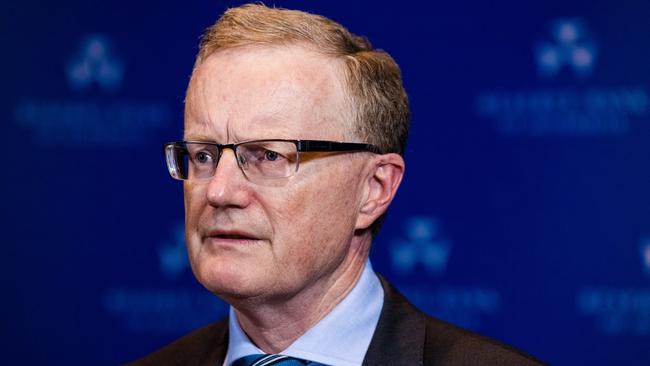Lowe isn’t reaching for the rate hike handbrake anytime soon
What is now of greater interest to markets – and mortgagors – is whether the RBA persists with 50bp increments in October and perhaps November, or whether it might dial back any future increments to 25bp.
On that score, RBA governor Philip Lowe’s statement announcing the policy rate increase was (properly) circumspect.
Lowe noted that the RBA was “not on a preset path” when it came to future policy rate increments and that the “size and timing of future interest rate increases will be guided by the incoming data”.
Such a statement gives the RBA maximum optionality which, given the current elevated level of uncertainty that attaches to both the domestic and global economic outlooks, is entirely appropriate.

There is a section of the market commentariat that has been vocal in warning that, given the lags in monetary policy, there is a risk that the RBA may overdo it and plunge the economy into recession.
That is a risk, but so is a premature declaration of victory over the inflation threat.
Risks are symmetrical.
It is just as valid to argue that taking the foot of the brakes now runs the risk of letting the inflation genie run amok.
Activity indicators have slowed somewhat, particularly in housing, but overall they appear to be holding up reasonably well.
Wednesday’s second quarter GDP release is expected to show the economy grew at quite a satisfactory clip in the June quarter.
The labour market is in good health with the unemployment rate at a 48 year low. Indeed, the bigger problem is not a lack of jobs but a lack of workers to fill available vacancies.
And, perhaps most importantly, inflation portents remain particularly concerning.
The most recent, the National Australia Bank’s monthly business survey showed extraordinary momentum in wage and price indicators in July: final product retail prices increased at a quarterly rate of 3.3 per cent; while labour costs and business purchase costs were up by a whopping 4.6 per cent and 5.4 per cent respectively.
Such momentum indicates a danger of the emergence of the sort of inflation inertia that was last experienced on a global scale in the late 1970s and early 1980s.
Indeed, NAB economists estimate that, should the rate of increase in retail final product prices in its July survey persist for the rest of the quarter, the annual increase in the trimmed mean CPI could be above 6 per cent by the September quarter.
This suggests upside risk to the most recent RBA forecast, issued just under a month ago, of a 6 per cent increase over the year to the December quarter 2022.
That means 50bp may well be on the agenda for the October and an out-size September quarter CPI increase released on October 26 may even see a 50bp increment make the agenda of the November meeting as well.
A sequence of such moves could see the cash rate ends the year at around 3.6 per cent compared with a current market expectation of around 3.20 per cent.
Like almost every other central bank, a late start and an overly conservative approach to the withdrawal of historically high levels on monetary stimulus has put the RBA beyond the realm of “first best” solutions.
It now finds itself searching for a “least bad” or a “second best” outcome. Such outcomes imply a period of soft activity growth – which is pretty much reflected in RBA activity and employment forecasts. That softness was baked in the cake when the RBA was slow to recognise the inflation threat in 2021.
However, if there was a lesson to be learnt from the 1970s and 1980s inflation episode, it is that a more tepid approach to containing inflation now might necessitate an even more aggressive approach down the track with an attendant greater likelihood of more substantial macroeconomic dislocation in terms of growth and employment.
If the current policy rate is indeed well below the neutral rate – which it undoubtedly is – and there is a pressing requirement to get to neutral and beyond that to restrictive territory, then the best approach is do so as quickly as possible.
It may be such moves are required to the contain inflation and (just as importantly) any surge in inflation expectations because of a more rapid acceleration of prices than markets are currently willing to contemplate.
I would be keeping a close eye on the price components of the NAB survey but given ongoing adverse inflation portents, my judgment is that the RBA will again adjust rates by 50bp when it meets in October and there may be more such increments to follow.
Stephen Miller is an investment strategist with GSFM







In what was a widely anticipated move, the Reserve Bank adjusted the policy rate by 50 basis points to 2.35 per cent after its September board meeting.